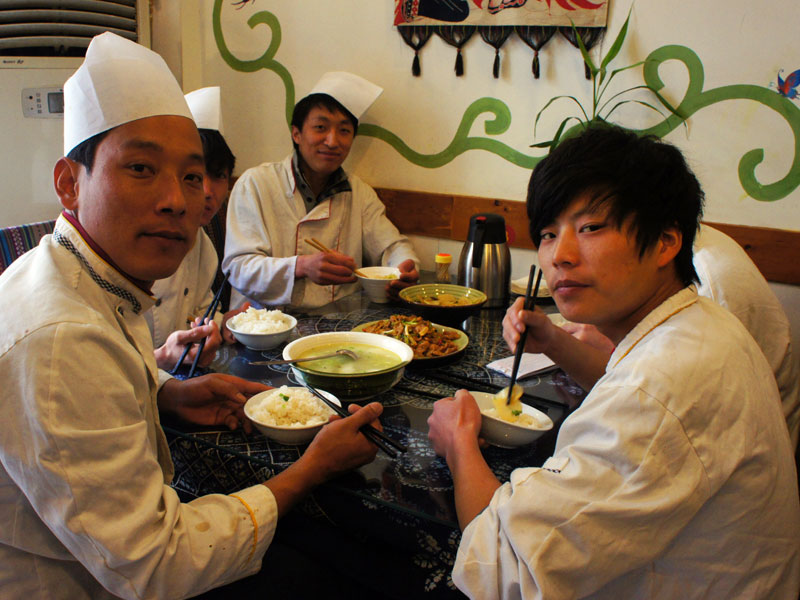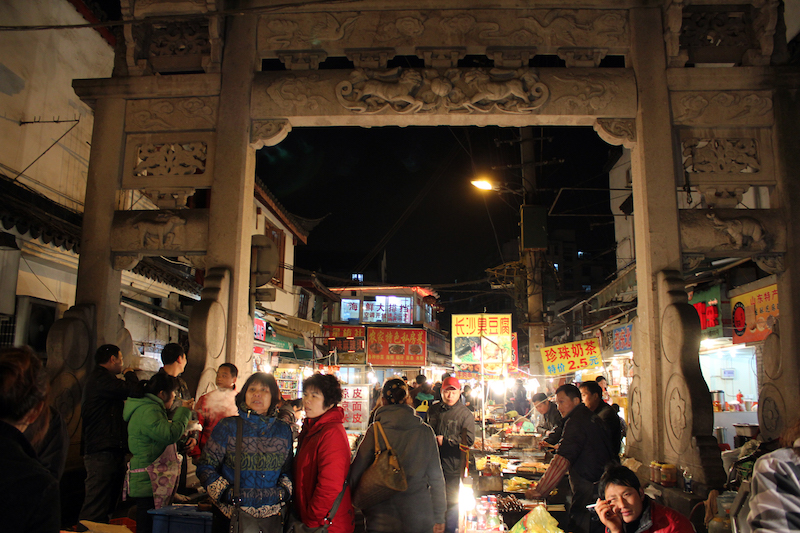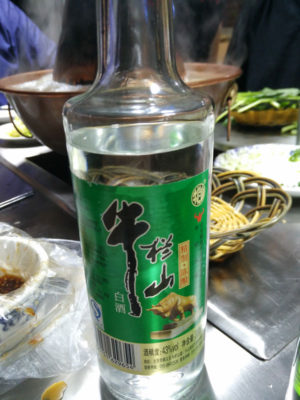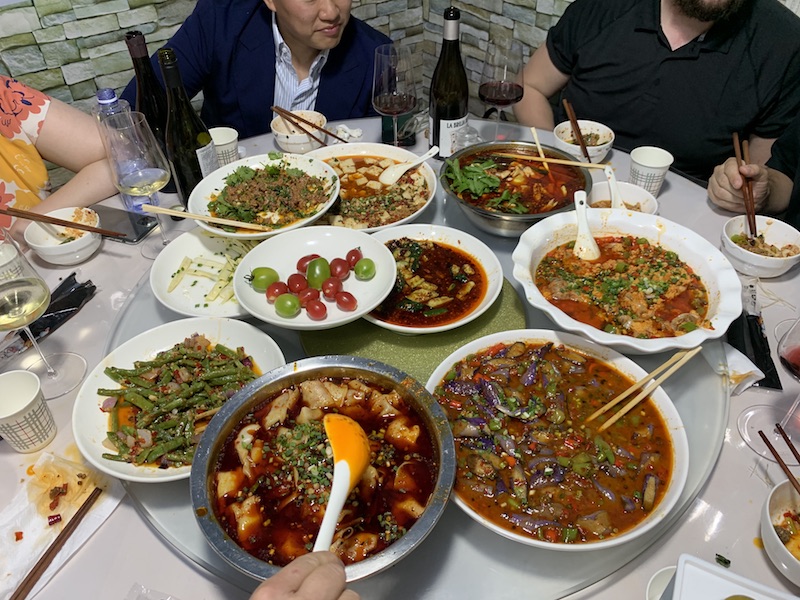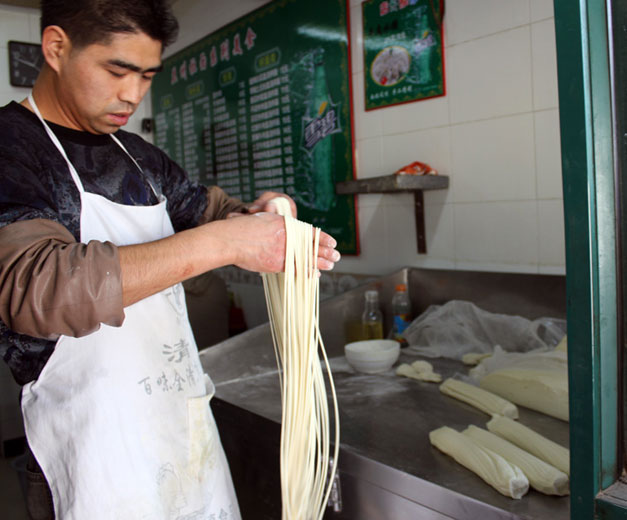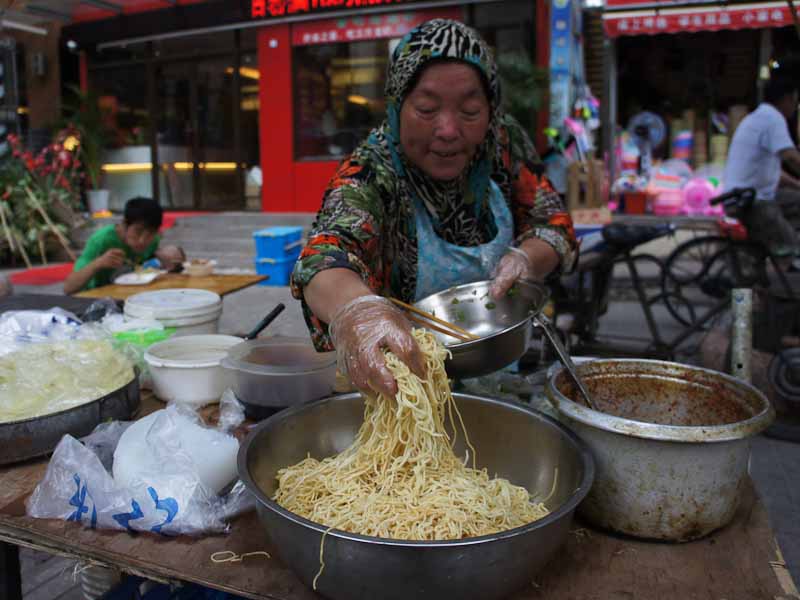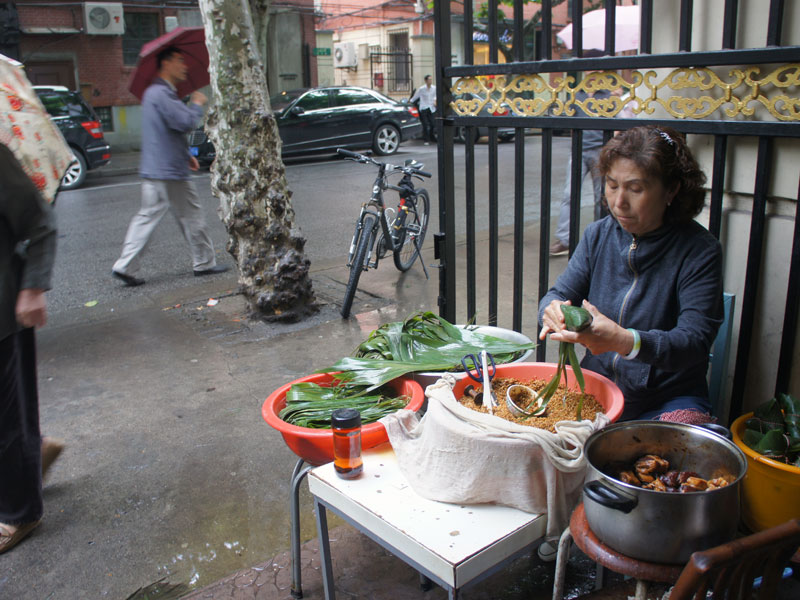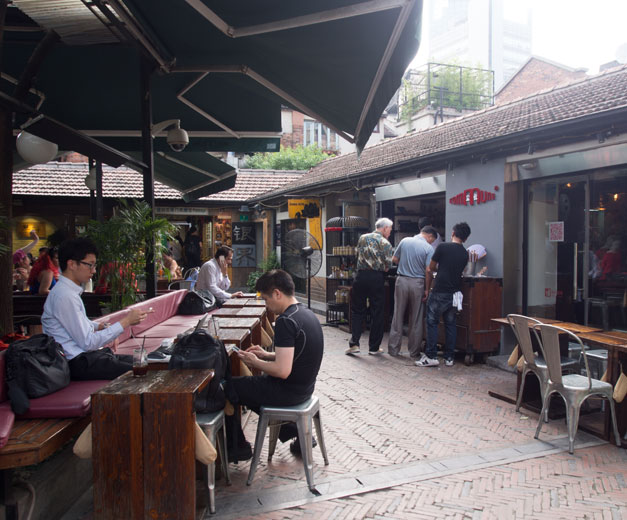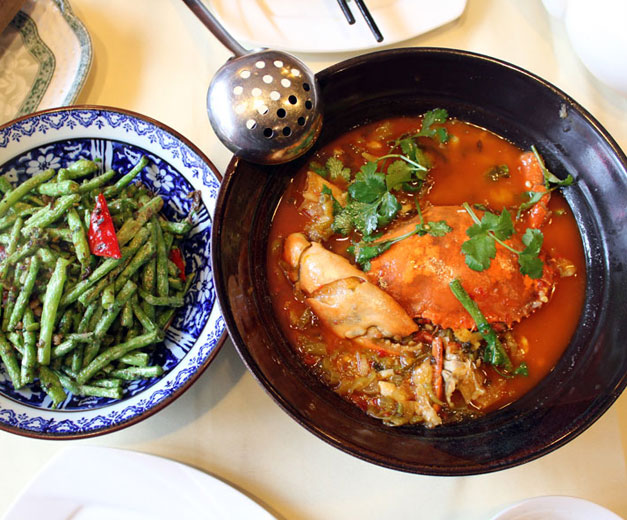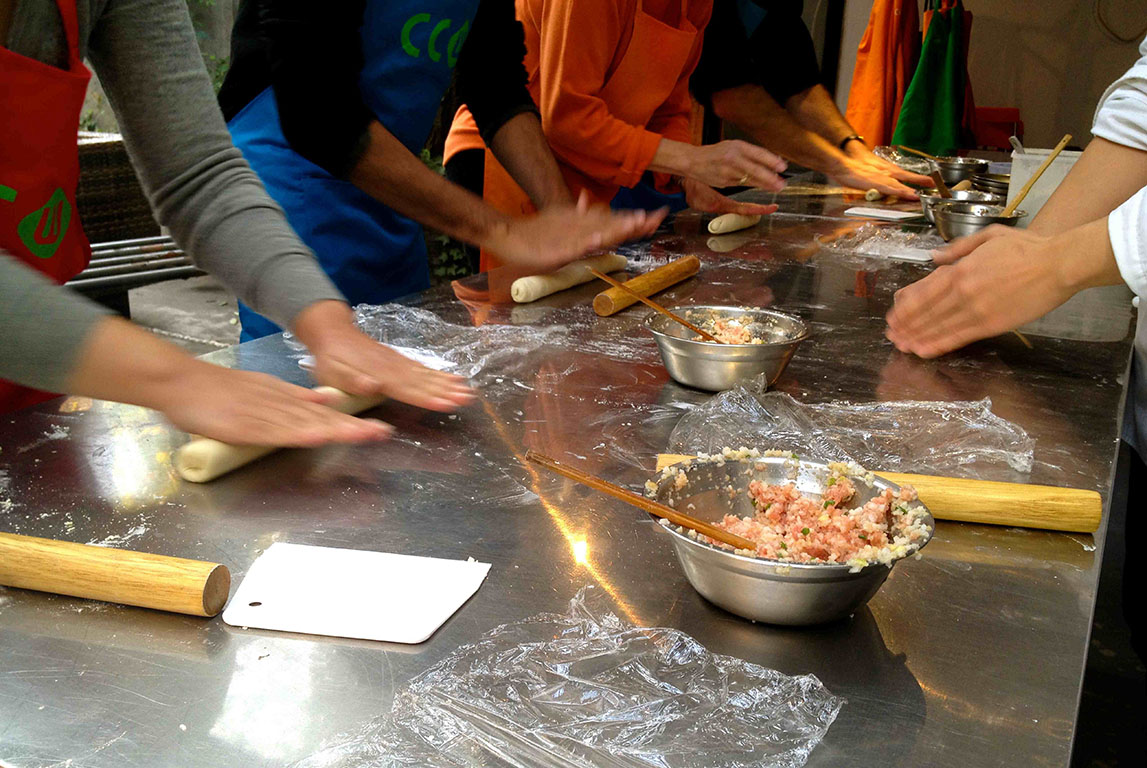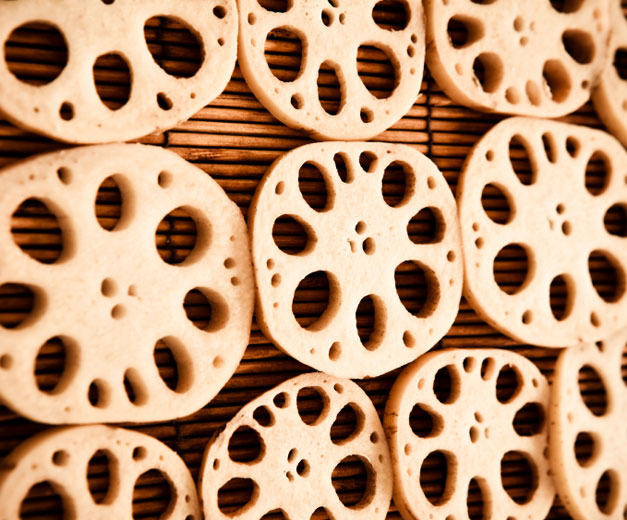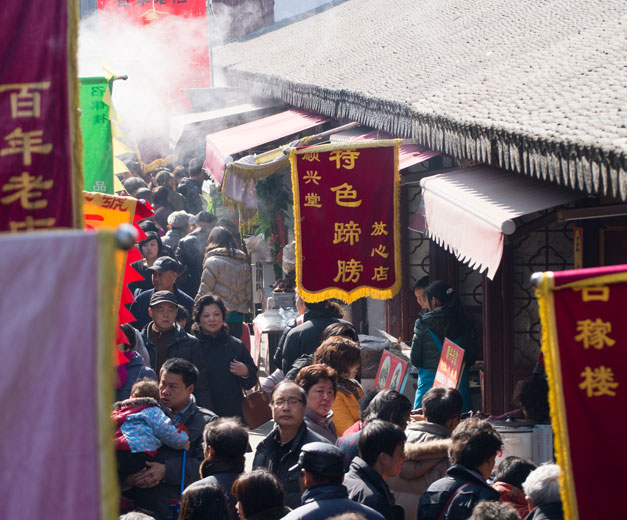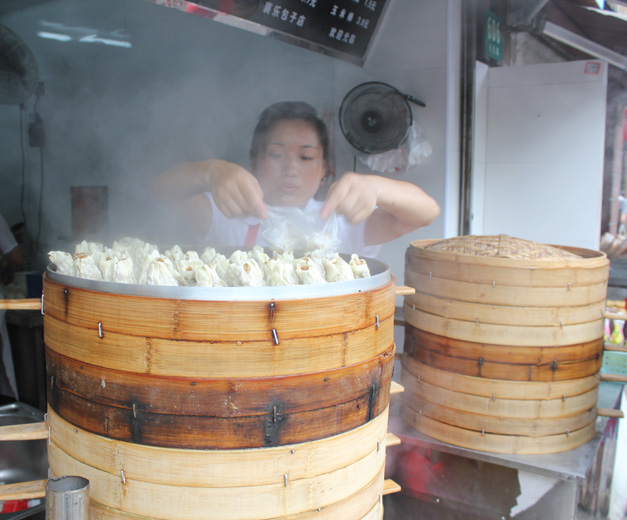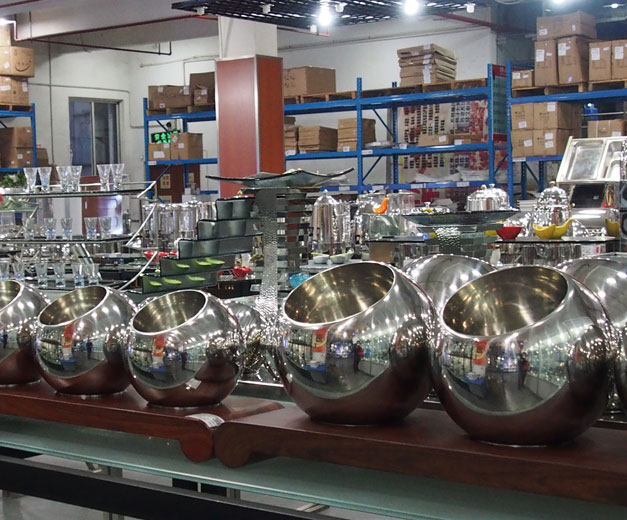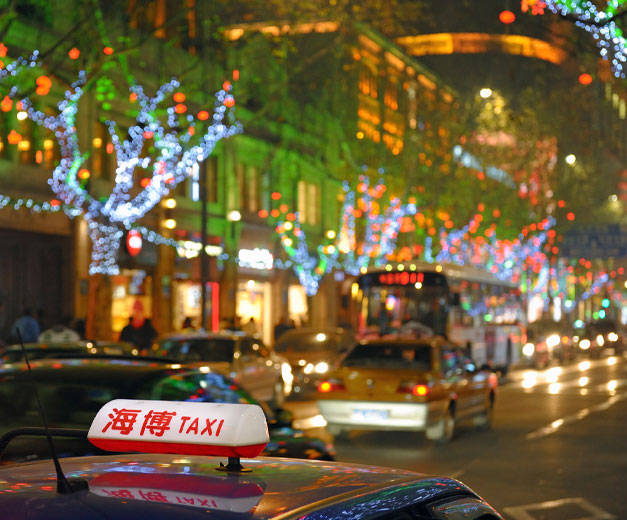We can't find the internet
Attempting to reconnect
Something went wrong!
Hang in there while we get back on track
Search results for "Kyle Long"
Shanghai
Take a Bao: Shanghai’s Top 5 Soup Dumpling Restaurants
Xiaolongbao first appeared around 1875, during the Ming Dynasty, in Nanxiang, a village on the northwestern outskirts of Shanghai. As the story goes, a vendor selling dry steamed buns decided to innovate due to stiff competition. Legend also suggests, however, that he copied the giant soupier dumplings from Nanjing. Whatever the case, there are several regional varieties of soup dumplings today, including Nanjing-style, which are actually called tāngbāo (汤包), literally meaning “soup bun,” and traditional Shanghainese xiǎolóngbāo, which have heartier wrappers that contain a larger pork meatball in a sweeter pork soup. Here are five of our favorite spots in Shanghai for soup dumplings of all strips.
Read moreShanghai
Lotus Eatery: Minority Cuisine Report
Ever since former President Deng Xiaoping opened China’s economic doors to the rest of the world starting in 1979, foreigners wishing to do business in China have had to find a local partner to form a joint venture company. Though no longer a hard-and-fast requirement, that’s still the modus operandi at Lotus Eatery, where a founding partnership brings together the best of both culinary worlds: unusual yet authentic local flavors and distinctly foreign notions of consistent quality and attentive service.
Read moreShanghai
Top 5 French Concession Noodle Joints
The relative abundance of heritage architecture and mixed zoning in the former French Concession neighborhood (technically the Xuhui district) has left a legacy of nooks and crannies where a number of mom-and-pop noodle shops are able to withstand the test of time and pressures of a fast-changing economy. Luckily, enough noodle lovers are still craving the classics and will queue up to support their favorite local haunts. Our top five picks can get crowded, but if you avoid the main lunch rush from noon to 1 p.m., you shouldn’t have to fight (too hard) for a seat.
Read moreShanghai
Best Bites 2019: Shanghai
In Shanghai, robot restaurants (and grocery stores) were all anyone could talk about in 2019. Well, that and bubble tea shops. But we love that there are still thousands of mom-and-pop restaurants serving traditional foods that are handmade and well loved, if you know where to look. So next time, skip that trendy, US$100-a-head hotpot joint where you still have to queue for an hour after your reservation has passed, and try your local noodle joint. Of course, you’ll probably scan the QR code on your table to order (and pay), and you won’t even chat to the staff until they put your dishes in front of you – after all, it is 2019 in one of the most tech-forward cities in the world.
Read moreShanghai
Table for One: Dining Solo in Shanghai
It only took three years for Alibaba’s made-up shopping holiday on Singles Day, originally a joke celebration created by students in Chinese universities in the 1990s, to exceed Cyber Monday and Black Friday’s sales figures – combined. Since 2009, massive discounts have been offered annually on November 11 (11/11 – one is the loneliest number, after all). In 2019, sales on Alibaba topped US$38 billion in a 24-hour period, blowing last year’s record – US$30 billion – out of the water. In case there’s any doubt as to the importance the company places on the date, this year Taylor Swift performed at the gala evening that coincided with the day’s online sales activities.
Read moreShanghai
Yang Yang’s Dumplings: The Other Yang
Search online for Shanghai’s best fried dumplings, and you’ll come up with hundreds of results extolling Yang’s Fried Dumplings. Though it was once just a humble shop sandwiched between the Bund and People’s Square, the online renown and ensuing crowds have propelled the brand into chain-store ubiquity, populating new malls and shopping streets with fervor. In essence, they’ve become the Starbucks of dumplings; you’re going to get a relatively consistent product, but come on, you can do so much better! Enter Yang Yang’s.
Read moreShanghai
Jianbing: Loved Abroad, Threatened at Home
When we set out to create a foodie “holiday” this past April for jianbing, one of China’s most-loved street snacks, we didn’t know quite what to expect. Our aim with World Jianbing Day, which included giveaways and a social media campaign encouraging people to add their favorite jianbing spots in China and abroad to a crowd-sourced map, was to build awareness outside the typical jianbing consumer base. Locals who grew up with and already love the snack don’t need much reminding about the virtues of the perfectly balanced crepe from northern China. But everyone else? They need to know about the sweet, crunchy, pickled, spicy and salty elements all wrapped up in one convenient burrito-crepe-style to-go snack.
Read moreShanghai
Taiwanese Pork Rice: Balancing Act
Shanghai doesn’t fit the traditional (if often false) narrative that urban spaces consist of “good” neighborhoods and “bad” neighborhoods. Crime is not a major concern for most residents in the city, and truly derelict areas are few and far between. However, the varying levels of development and infrastructure create different zones that deeply impact residents’ lifestyles in ways that are more extreme than in other more developed countries. On a recent weekend road trip to Moganshan, a mountainous oasis of bamboo forests just a few hours from Shanghai, the starkness of the city’s “development zones” came to light as we made our way home to the tree-lined streets of the former French Concession
Read moreShanghai
Shanghai: State of the Stomach 2018
In 2017, Shanghai’s longest-running open-air market at Tangjiawan Lu, which had provided the neighborhood with fresh produce, fish, and seasonal foodstuffs for almost 115 years, shuttered its doors. The market and much of the area around the Laoximen metro station were some of the last historical (albeit run-down) structures in an otherwise central area full of expensive new residences. Construction has already begun on the entire city block’s worth of high-rises being built in its place, and the surrounding blocks – like many of Shanghai’s backstreets – are on notice, as the wrecking balls and construction crews continue to reshape the urban landscape at an incredibly fast rate.
Read moreShanghai
Shanghai: State of the Stomach
In 2017, Shanghai’s longest-running open-air market at Tangjiawan Lu, which had provided the neighborhood with fresh produce, fish, and seasonal foodstuffs for almost 115 years, shuttered its doors. The market and much of the area around the Laoximen metro station were some of the last historical (albeit run-down) structures in an otherwise central area full of expensive new residences. Construction has already begun on the entire city block’s worth of high-rises being built in its place, and the surrounding blocks – like many of Shanghai’s backstreets – are on notice, as the wrecking balls and construction crews continue to reshape the urban landscape at an incredibly fast rate.
Read moreShanghai
Auspicious Eating: Ringing in the Year of the Dog
There’s a joy in staying in China’s big cities over the upcoming Lunar New Year (春节, chūnjié). As people start the “great migration” back to their ancestral hometowns to enjoy the annual reunion dinner (团圆饭, tuányuánfàn, or 年夜饭, nián yè fàn) with their family, Shanghai becomes a ghost town. Nearly every shop and restaurant closes up for at least a week (and sometimes more like three), as employees travel back to inland provinces like Anhui and Henan for a well-earned break and the chance to eat traditional, home-cooked meals with relatives. So long as you have a well-stocked fridge, the New Year is a peaceful time to explore the empty streets.
Read moreShanghai
Lunar New Year Preparations in Shanghai
As Shanghai prepares to welcome the Year of the Dog, preserved poultry, fish and, as pictured here, the conger pike, a species of eel, can be spotted hanging in quiet laneways and bustling markets, ready to be purchased for traditional holiday dishes. The Lunar New Year begins on Friday, February 16, this year.
Read moreShanghai
319 Noodle House: Scan, Slurp, Repeat
These days, you won’t find anyone reaching for their wallet while dining out in Shanghai. Cash has become almost obsolete as virtual currencies corner every last slice of the retail payment market. QR codes and app-based systems are the new normal, even for transactions less than the equivalent of US$1 (like our beloved breakfast street food staple, the jianbing). According to a recent New York Times article, mobile payments in China hit US$5.5 trillion in 2016. Yes, with a “T”. And 2017 is sure to be another banner year as AliPay, WeChat Wallet, Apple Pay and others continue to fight for market share.
Read moreShanghai
Holy Cow: Beefed-Up Hotpot
We’d just about given up on hotpot, what with last year’s scandals of rat meat parading as lamb and opiates mingling with the Sichuan peppercorn to give diners a real buzz. But 2014 has seen the trend of farm-to-table dining hit Shanghai in a big way, spurred on by these food safety concerns. The most recent entrant to the organic dining scene is the aptly named Holy Cow. More than just a phrase made famous by Chicago Cubs announcer Harry Caray, Holy Cow is a healthy hotpot restaurant specializing in – you guessed it – beef, plus vegetables sourced from owner Anthony Zhao’s family farm. Loyal CB eaters might remember Zhao from his Shanghainese lunch hotspot Mi Xiang Yuan.
Read moreElsewhere
Baijiu in Beijing: White Lightning in the Capital
Baijiu, which translates literally as “white alcohol,” is a clear spirit made predominately from sorghum, although glutinous rice, maize or other grains can also be utilized in various proportions. It is ubiquitous in China at official events, like weddings, business deals, and boozy government lunches, but under President’s Xi Jinping’s ongoing crackdown on government largesse, sales are down about 13 percent from a peak in 2012. As baijiu growth falters, many brands are looking abroad to push sales – not only to introduce it to foreigners, but also to keep it relevant to the younger, wealthier generation of Chinese who are living as expatriates.
Read moreShanghai
Liu Family Harbin Dumplings: Pot-to-Plate Dining
[Editor's note: We're sorry to report that Harbin Dumplings has closed.] Walk along just about any street in Shanghai these days, and you’ll see an ever-encroaching range of Western brands, standardized brand signage and food franchises. As in other rapidly developing countries, the battle for consumer dollars and brand loyalty has meant more chains and mass-produced food. That’s partly what makes stepping into one of the several Liu Family Harbin Dumplings shops a breath of fresh air. Every morning until the lunch rush, the dining room and back rooms are set up with trays and workers dexterously making every dumpling from start to finish. Dumpling wrappers are meticulously hand-rolled, the fillings are mixed in large batches, and the time-consuming process of filling and closing the dumplings marches on until tray upon tray is ready for boiling.
Read moreShanghai
La Weixian: Sichuan Family Values
It was Mr. Liu’s huge grin that first caught our eye, welcoming us into his humble, living room-sized restaurant. Scanning the small space, we suspected we had hit upon a gem: white tile walls, basic stools, vegetables crammed into the fridges in the dining room and fiery red dishes dotting the tables of happy diners – all hallmarks of the down-to-earth eateries we’re always looking for. As we sat down and he started explaining his specialties, we could feel his genuine interest in having us taste his authentic Sichuanese cuisine, going well beyond just making another sale.
Read moreShanghai
Shopping Spree: Shanghai Food Souvenirs
So you’ve eaten your way around Shanghai’s delicious noodle shops and restaurants but want to bring a taste of China back home? Or maybe you’re searching for a weird food gift (pickled chicken feet anyone?) for a hard-to-please friend. You’re in luck, as specialty food shops dot the city and are quite popular with locals, offering a huge variety of well-packaged items.
Read moreShanghai
Qian Xiang Ge: Sauce Dynasty
Guizhou is largely unfamiliar to most outsiders, but many Chinese consider the beautiful province one of the country’s last destinations unspoiled by mass tourism. Nestled between the Hunan and Yunnan provinces, Guizhou’s mountainous terrain has caused infrastructure development to lag behind other regions. Because of the various ethnic minorities that make up more than one-third of the population and who would often rather keep a more traditional way of life, Guizhou ranks at the bottom of the list for GDP per capita by province.
Read moreShanghai
Strictly Cookies: Cookie Monsters, Inc.
For years, expats in Shanghai complained about the lack of quality desserts in the city. Perhaps they just meant familiar desserts, as locals were more than happy to point them to delicious egg tarts, mooncakes or Taiwanese iced treats. But alas, when it came to sweets, there seemed to be a Great Wall-sized divide between East and West. In an effort to bring together sweet tooths from both sides of the dessert dividing line, in 2010 Lexie Comstock started Strictly Cookies, an American-style cookie delivery company in Shanghai that she hoped would delight expats and win over locals along the way. Having first visited China in 2000 while in middle school, Comstock later plunged into studying Mandarin and majoring in East Asian Studies at Harvard.
Read moreShanghai
Ask CB: Shanghai Wet Markets?
Dear Culinary Backstreets, I’ve heard about “wet markets,” but what are they exactly? And where can I find the best wet markets in Shanghai? Stocked with all the fresh produce and live seafood that hungry Shanghai residents could ever cook up, wet markets are an essential alternative to the brand-name supermarkets vying for their slice of the market share of the planet’s largest population. These markets are so named because the floor tends to be wet, thanks to the live fish flopping around and the vendors’ habit of throwing water on the ground to keep the area clean. They are, however, under constant pressure from the central government’s drive to urbanize the population and modernize facilities, which has led to the steady destruction of the more traditional ones.
Read moreShanghai
Ask CB: MSG Worries?
Dear Culinary Backstreets, Should I be concerned about MSG when I eat in Shanghai? The addition of MSG to Chinese food has been dividing diners for decades now, yet it appears that most people still don’t really know why they’re trying to avoid the stuff, or if they should even be concerned. We’re here to clear that up, once and for all.
Read moreShanghai
Yang Yang's Dumplings: The Other Yang
Search online for Shanghai’s best fried dumplings, and you’ll come up with hundreds of results extolling Yang’s Fried Dumplings. Though it was once just a humble shop sandwiched between the Bund and People’s Square, the online renown and ensuing crowds have propelled the brand into chain-store ubiquity, populating new malls and shopping streets with fervor. In essence, they’ve become the Starbucks of dumplings; you’re going to get a relatively consistent product, but come on, you can do so much better! Enter Yang Yang’s.
Read moreShanghai
Yuyang Laozhen: Farm to Table
Shanghai’s farm country is closer than most residents imagine, especially when surrounded by the city’s seemingly endless forest of skyscrapers. But just beyond the spires is a huge, green oasis: Chongming. Somewhat smaller than Hawaii’s Kauai, this island at the mouth of the Yangtze River grows much of the municipality’s food supply. The government is pushing plans forward to develop the area with “eco-friendly” industries by 2020 but, as usual, has not provided many details on how these goals will be achieved. A stopping point for millions of migratory birds each year, the island (for now) has several wetland zones and ecological parks that are open to visitors, making it a worthwhile jaunt for those wanting to escape Shanghai’s urban jungle.
Read moreShanghai
Sleight of Hand: Lanzhou, Henan and DIY Noodles
Wandering around Shanghai’s quieter streets, you may often hear a thump thump thwack! ringing out from a streetside café. If you’re lucky, it means someone is pulling noodles fresh to order, and if you’re even luckier, you’ll happen to be hungry enough to enjoy a bowl.
Read moreShanghai
Muslim Market: Western Exposure
Food lovers mourned the loss of Shanghai’s Muslim market when it packed up its stalls a couple of years back, but the closure wasn’t too unexpected. Street food is always in a state of flux in Shanghai, and add to that the ethnic tensions that have developed between the Chinese majority Han and the Muslim minorities that butchered whole lambs outside Putuo’s Huxi Mosque each Friday, and it seemed like a matter of time before the weekly event was closed. The government ostensibly blamed neighbor complaints (the bazaar seemed to have outgrown the sidewalks, interfering with traffic and sending smoke from the grills into the residential areas), and vendors were abruptly told to pack up.
Read moreShanghai
Zongzi: Dragon Boat Delights
In typical Shanghai fashion, good things come to those willing to stand in the longest lines, or to pre-book the farthest in advance. We’ve seen the queue for braised duck at Guang Ming Cun swell to several hours long during the Chinese New Year, and A Da's scallion pancakes require a minimum hourlong wait on most days, yet we had never expected the same for the humble zòngzi (粽子).
Read moreShanghai
For a Good Claws: Hairy Crab Season in Shanghai
Hairy crab season is once again sweeping Shanghai’s diners into a frenzy, with the bristly crustaceans popping up on street corners, in streetside wet markets and, most importantly, on dinner plates. This year we’ve even seen reports of elaborate live crab vending machines hitting the streets in Nanjing and an attempt to start a black-market trade in German crabs.
Read moreShanghai
Eating and Drinking in Tianzifang: Toilets & Noodles
Beyond the stunning juxtaposition of the Bund’s colonial architecture with some of the world’s highest skyscrapers, one of Shanghai’s most charming, local architectural experiences can be found on the southern edge of the former French Concession, in the neighborhood of Tianzifang. Slated to be destroyed to make way for (yet another) mall development in 2008, Tianzifang's artist community rallied to save the warren of original laneway houses that are uniquely Shanghainese.
Read moreShanghai
Food for Thought: Eating Healthy in Shanghai
Whether we’re talking fat-free, gluten-free, organic, MSG-free, Paleo or vegetarian, every regimen takes on new challenges and pitfalls when you are traveling or living abroad – especially in a country like China, where you may face a language barrier.
Read moreShanghai
Go Short or Long: Strategies for a Shanghai Layover
Anyone looking for a bit of entertainment or foodie satisfaction while on a layover in Shanghai will need to look well beyond the confines of the airport. Pudong’s international airport may be a huge, mostly gleaming, modern space, but it has some of the most overpriced, bland food and off-brand shopping with little to do beyond making repeated attempts to connect to the free Wi-Fi.
Read moreShanghai
Deng Ji Chuan Cai: Absolutely Crabulous
Though giant pandas subsist almost exclusively on one single plant – bamboo – the same would not stand for the other, more human, natives of Sichuan province. Its capital city, Chengdu, was once famed as the start of the southern route of the Silk Road, along which exotic vegetables and spices were ferried inland from Burma, India and around Central Asia.
Read moreShanghai
Spicy Moment: The Hunan Touch
It’s a rare feat, even in Shanghai, when a Chinese restaurant serves authentic dishes in an atmosphere that is style-conscious, laid-back and affordable. Spicy Moment manages all three, so it’s no surprise to learn that the owner, Lao Deng, owns a quirky interior design shop just across the street and constantly moves between the two spaces. His jaunty hats reveal an eye for style, and perhaps this Hunan native can take some credit for turning Wuyuan Lu into one of the former French Concession’s hottest browsing – and now eating – destinations.
Read moreShanghai
Shanghai's Top 5 Vegetarian Eateries: Beyond Buddha's Delight
Strict vegetarians in Shanghai face a double-edged sword when it comes to staying meat-free. On the one hand, the country’s large Buddhist population means they are in good company. It is estimated that the total number of vegetarians in China reached about 50 million last year. However, while tofu dishes can be found on just about every Chinese menu, that doesn’t mean that the dishes are strictly meat-free. To vegetarians’ dismay, pork and meat-based broths are often used to give the soy-based dishes more flavor, and special requests (even simple ones like “no meat”) are not usually complied with (or understood). Traditionally, meat is often sliced in very thin strips (肉丝, ròu sī) and used to flavor vegetable and tofu dishes, as opposed to being the star
Read moreShanghai
Ask CB: Cooking Classes in Shanghai?
Dear Culinary Backstreets,I love to cook as much as I love to eat, and on my upcoming trip to Shanghai, I’d love to take a cooking class to learn more about Chinese cooking and ingredients. Where can I take English-language cooking classes in the city? With the typical Chinese menu offering 100-plus items, there is a world of Chinese cooking to be discovered, whether you’re in Shanghai for a brief trip or an extended expat adventure. Learning the cooking methods behind some of your favorite dishes will give you the tools to recreate (and adapt to your tastes) your favorite dishes at home using ingredients commonly found in neighborhood markets. One of the biggest expenses expats face in the city is relying on imported food to make Western dishes, which can provide even more incentive to learn to cook local delicacies.
Read moreShanghai
CB on the Road: Hong Kong, Maximum (Eating) City
The hardest part about dining in Hong Kong is choosing among the overwhelming number of options. It’s one of the most densely populated cities on the planet, with more than 7 million mouths to feed – and many with demanding palates. You can stand on just about any block in the city and find several affordable eateries above, below and across from you (kind of like Starbucks in Seattle).
Read moreShanghai
Chinese Food Idioms: Killing the Chicken to Show the Monkey
In a country where the traditional way to greet someone translates to “Have you eaten yet?” (你吃了吗? Nǐ chīle ma?), it should come as no surprise that food idioms permeate everyday language in China. Chinese culture also prizes indirectness, so idioms are the perfect way to portray deep meaning without being overt. Frustrating for cross-cultural businessmen and language students or not, chengyu (成语), the ever-present four character idioms, and xiyu (习语), which are generally longer, are often the source of the hilariously mistranslated Chinglish you still see on street signs and menus today.
Read moreShanghai
Zhaojialou Water Town: Snack Street Field Trip
For visitors looking to get beyond Shanghai’s urban core, among the main attractions are the plentiful water towns that ring the outer suburbs in just about every direction. The name refers to the bygone reliance of these towns on water for irrigation and transport, especially in the form of canals. Billed as ancient villages, the popular destinations tend to be packed with visitors, with traditional foods as the main draw – perhaps due in part to the lack of other activities on offer.
Read moreShanghai
Move Over, Tea: Shanghai's Top 5 Coffee Shops and Roasters
China is increasingly becoming a nation of coffee drinkers, a trend that is quietly percolating out beyond the confines of cosmopolitan Shanghai and Beijing. As more and more tea terraces are converted to profitable coffee plantations in the country’s mountainous southwest regions, and with the number of Costa Coffee and Starbucks locations still on the upswing, it’s never been easier to find a decent cup of joe.
Read moreShanghai
Kuta's Kitchen: Big in China
It’s been more than half a century now since The Beatles formed, and their worldwide popularity continues unabated. In Japan especially, the band’s presence and influence were outsized almost from the beginning, and John Lennon’s marriage to Yoko Ono cemented the band’s place in Japanese culture.
Read moreShanghai
Step Away from the Buffet: A Shanghai Breakfast Primer
Editor's note: It's Breakfast Week here at CB, and to kick off the series, we first head to a street corner in the heart of Shanghai that offers a remarkable variety of breakfast foods. Stay tuned all this week for more morning dispatches from other CB cities. We’re all guilty of indulging in the complimentary hotel breakfast buffet a little too often while traveling. But in Shanghai, the widest array of street food is on full display in the morning hours, as young professionals and retirees alike gather at their favorite stands for a quick bite with friends or on their way to work.
Read moreShanghai
Ask CB: Buying Kitchen Supplies in Shanghai?
Dear Culinary Backstreets, I just moved to Shanghai, and while I’m looking forward to investigating all the street food options, I’d love to be able to make dinner at home too and would like to get into Chinese cooking. Where’s the best place to stock up my new kitchen?
Read moreShanghai
Festive Meals on Wheels: Holiday Delivery Roundup
For expats, the holiday season can be a time of mixed emotions. The distance from home can intensify our feelings of nostalgia (and cravings for Mom’s apple pie). On the other hand, we are liberated from the customs that bind us to familiar feasts, and we have the freedom to form new holiday rituals with friends.
Read moreShanghai
Pyongyang: Northern Exposure
North Korean cuisine is about as mysterious as it gets. Few travelers have ever actually been to the reclusive country, and news reports are more often about high-profile rescues and the dire food security situation than its national cuisine. Thanks to 10 North Korean restaurants in Beijing and 50 others scattered around Southeast Asia, those living in the Far East have plenty of opportunity to glimpse the country’s dining scene. Shanghai is home to seven branches of the Pyongyang restaurant chain, and food is only part of the draw. With a nightly show around 7:30 p.m., the song and dance numbers put on by the double-duty waitresses supposedly allow for a rare glimpse inside the traditional culture.
Read moreShanghai
Lao Shaoxing Doujiang: All-Night Breakfast
In Shanghai, a pretty surefire way to tell whether a dining establishment deserves your attention or not is by the presence of a line in front of it. (A corollary might be that the amount of attention the place deserves is commensurate with the size of the line.) Lao Shaoxing Doujiang passes the test. This ramshackle stand in the Huangpu district serves traditional breakfast foods all night long. Until recently, the stand was run by a granny in her nineties who would ladle out bowls of hot soy milk (豆浆, dòujiāng) into the wee hours of the morning. She retired this year, but her less-than-friendly son has taken over, and the buzz remains (as does the inevitable line).
Read moreShanghai
CB on the Road: Chengdu's Spicy Noodles
It’s been two weeks of cycling through China’s Qinghai province, and the food selection is slim. The majority of the province sits on the vast Tibetan Plateau, well above the tree line in conditions too harsh for significant cultivation. Yaks graze on well-trampled grass as far as the eye can see, with white yurts and colorful prayer flags dotting the hillsides and each summit pass. By Chinese standards, six million inhabitants in the country’s fourth-largest province make Qinghai practically deserted. For long stretches, only nomadic yak herders can be spotted between the tiny villages. Stopping for a roadside lunch in the small, isolated towns inevitably means a bowl of either mutton or yak chopped-noodle soup (羊肉面片, yángròu miàn piàn or 毛牛肉面片, máo niúròu miàn piàn). Served up in a tomato-chili broth, it’s a tasty meal, but repeated daily, it inevitably becomes tiresome. Additional ingredients sometimes includes julienned zucchini or green peppers, depending on the remoteness of the particular town and their staggered vegetable shipments. After just one week, we’re eagerly awaiting more fruitful pastures, and Sichuan province, located just to the east on our route, is a culinary paradise.
Read more
